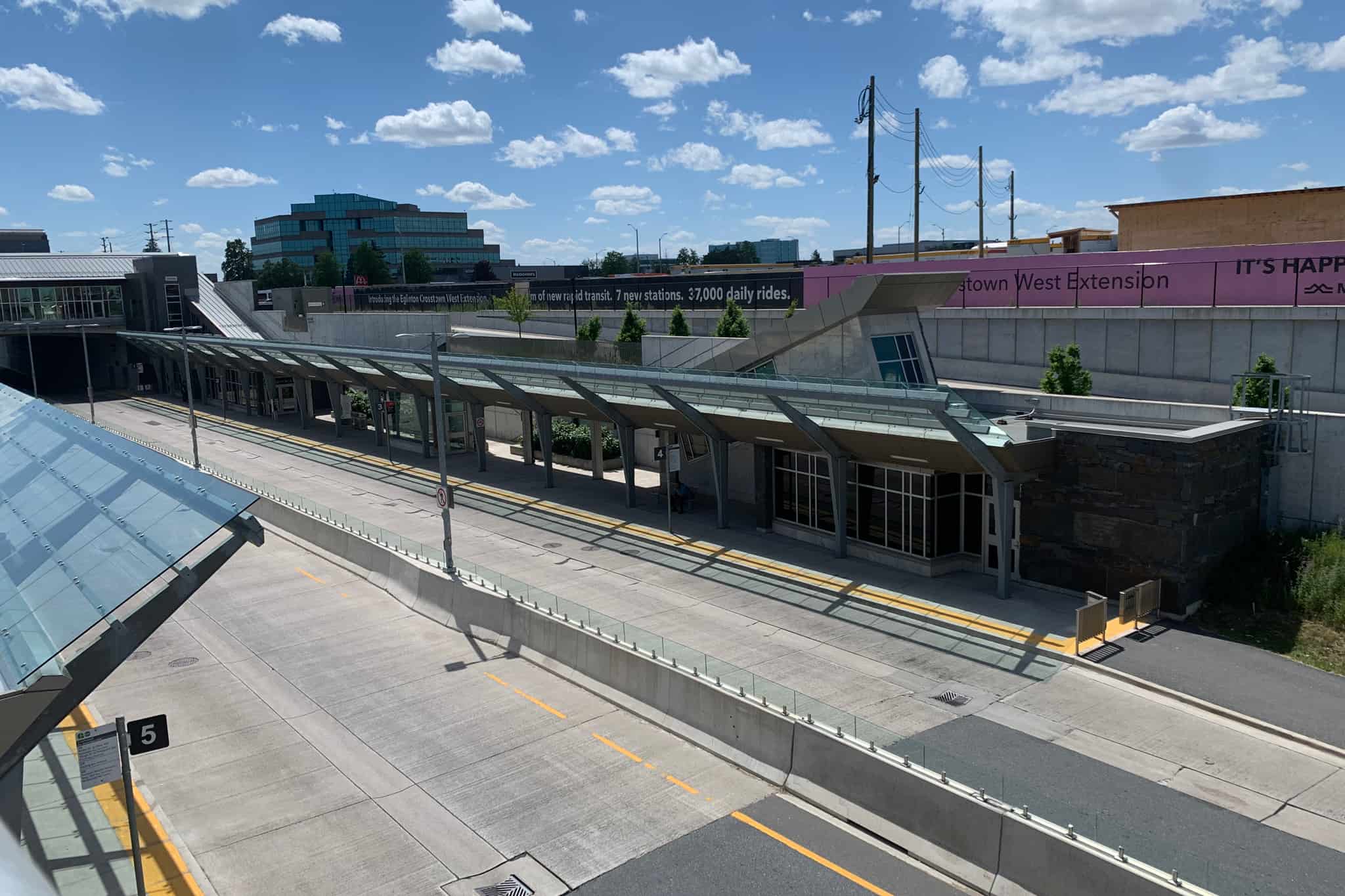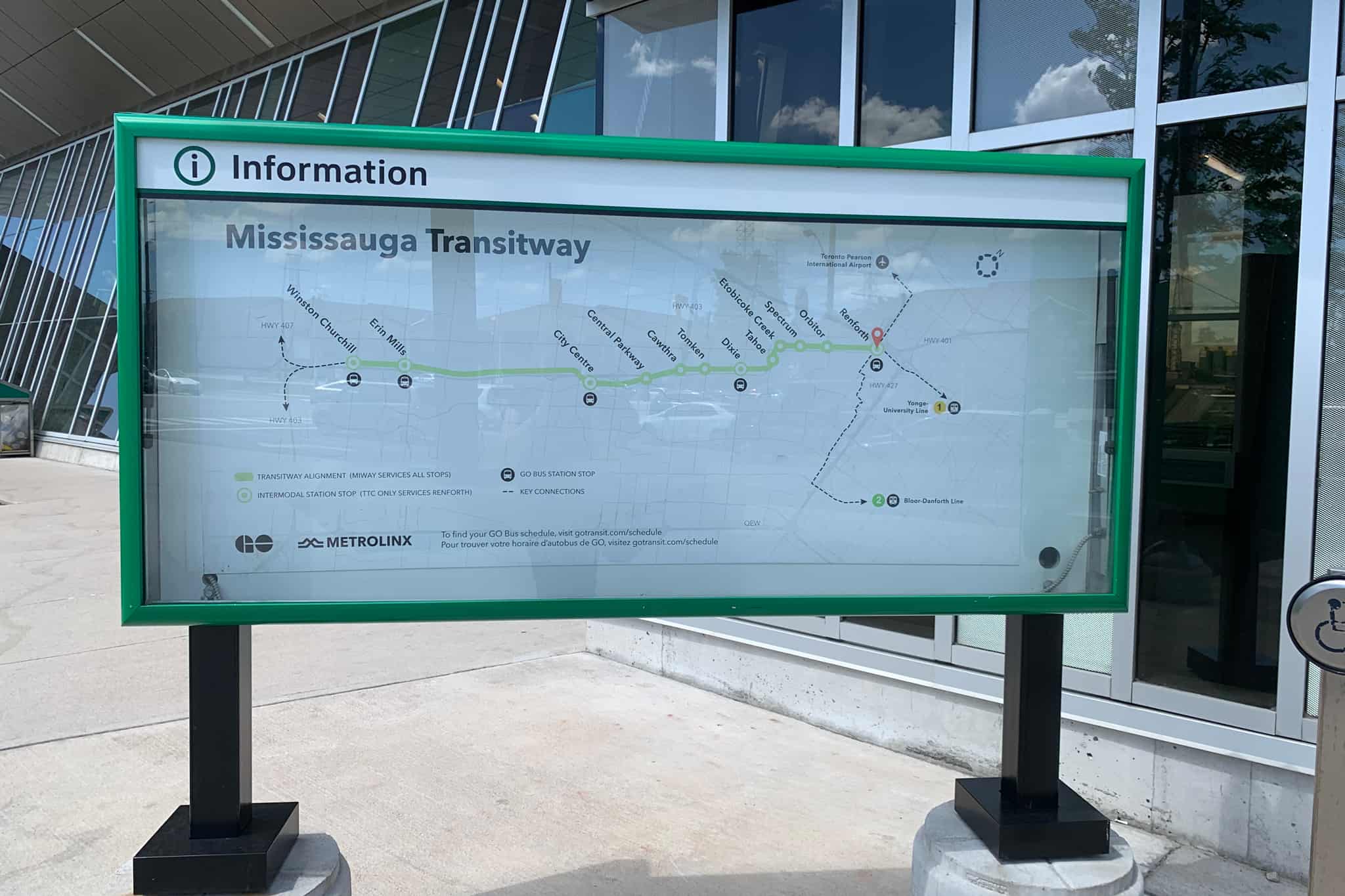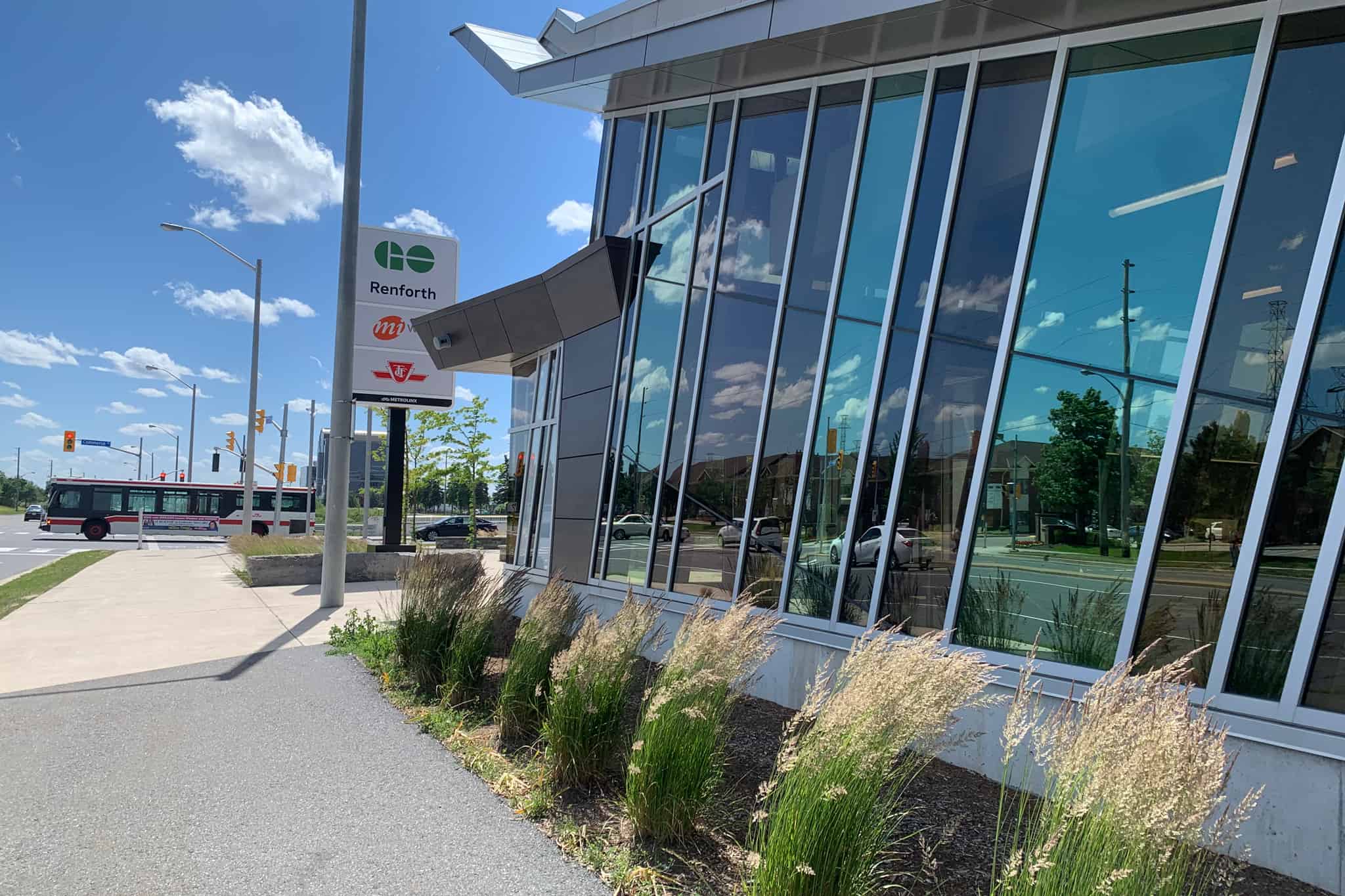$528 million Mississauga Transitway ridership dropped by 91% during the pandemic
Published July 7, 2022 at 1:40 pm

Ridership on the Mississauga Transitway took a nose-dive during the height of the pandemic and the service is still not packed with passengers.
It is not uncommon to see empty buses and stations along the 18-kilometre dedicated route that runs parallel to Hwy. 403. Funded by three levels of government, the joint Metrolinx and City of Mississauga project cost $528 million to build, almost double the original cost estimate of $270 million back in 2007.
But has it been worth it?
The service was completed in 2017, allowing riders to travel the full 18 stops from Winston Churchill Blvd. in the west to Renforth Station in the east. The dedicated lanes mean buses don’t have to stop for traffic signals which is supposed to make it faster than driving…if it is heading to where you want to go.
In that first full year of service, the system was able to reach its goal of five million riders, Geoff Marinoff, City of Mississauga director of transit tells insauga.com
“Our goal was to have five million rides on the transit way one year after the last piece was done (in 2017) and we achieved that,” Marinoff says.
Ridership grew to 6,083,846 in 2019 but then plummeted 91 per cent in 2020 to 574,956 rides. Students who used the Transitway to attend Sheridan and Humber Colleges were studying from home during the pandemic. Of course, many office workers also worked from home.
But the numbers are slowly increasing — at 2,266,910 in 2021. Ridership is projected to be much higher in 2022 but not likely reaching that 2019 number as many people are choosing a hybrid work from home model.

Location of the Transitway
The City of Mississauga started planning the Transitway back in the 1980s, says Marinoff. The location was partly chosen due to the availability of land next to Hwy. 403. It was also connecting transit across the city to places like the city centre, Humber College and the airport.
But critics of the Transitway suggest the location is all wrong.
“This place is not designed for transit, it’s a place designed for driving, with transit as an overlay to car-centric planning,” says Jason Slaughter, a Dutch-Canadian YouTuber who makes videos about urban planning and city design in Europe.
The biggest problem with the Transitway is the location of the stops, which are not in walkable areas, Slaughter says in his video. Slaughter compares transit in similarly sized European cities to North American cities. LRTs, trams, trains and busways are more successful in Europe because they are built in walkable areas.
But Marinoff suggests Mississauga is a new city and building transit will take time. He admits that some of the Transitway stations suffer from a “last mile problem” meaning every transit trip starts and finishes with a walk — sometimes a long one.
People are often dropped off from cars at Transitway stops, but riders also access it from other transit or walk or cycle to the station. It would be best if cars were not used to get to transit.
“We’re really trying to do the work on that last mile in terms of, can we make it more walkable? Can we make it better for cycling? Do e-bikes fit in or scooters fit in? I don’t have answers to those questions,” he says.

Marinoff suggests development needs to move toward more mixed-use communities so people don’t need cars as much.
“Each area has got its own unique challenges,” he adds. “You look at Cawthra station, it’s in the middle of the 403-Eastgate interchange. There are no houses near there. There’s really not much space to build buildings. And so that location is probably not going to have much happening because it’s sort of trapped by all these roads.”
But other Transitway stations are starting to see development nearby because of the access to rapid transit.
Transit for the future
The Mississauga Transitway is flexible. If ridership is down, buses can go to other locations, and schedules can change.
The Transitway was built with future uses in mind, Marinoff says. It could be converted into a light rail system.
A move toward more public transit is in the future for Mississauga. Metrolinx is now building the Hurontario LTR, which will take passengers from Port Credit to Brampton.
Also driving individual cars won’t be sustainable — either for the environment or a growing city.
“We’re seeking to be a transit-oriented city, because frankly, we know the city is going to continue to grow,” says Marinoff. “We also know that there are two and a half million people moving into the GTA in the next 20 years, many of them are coming to Peel. And if everybody brings a car, nobody’s going to be going anywhere.”
INsauga's Editorial Standards and Policies

